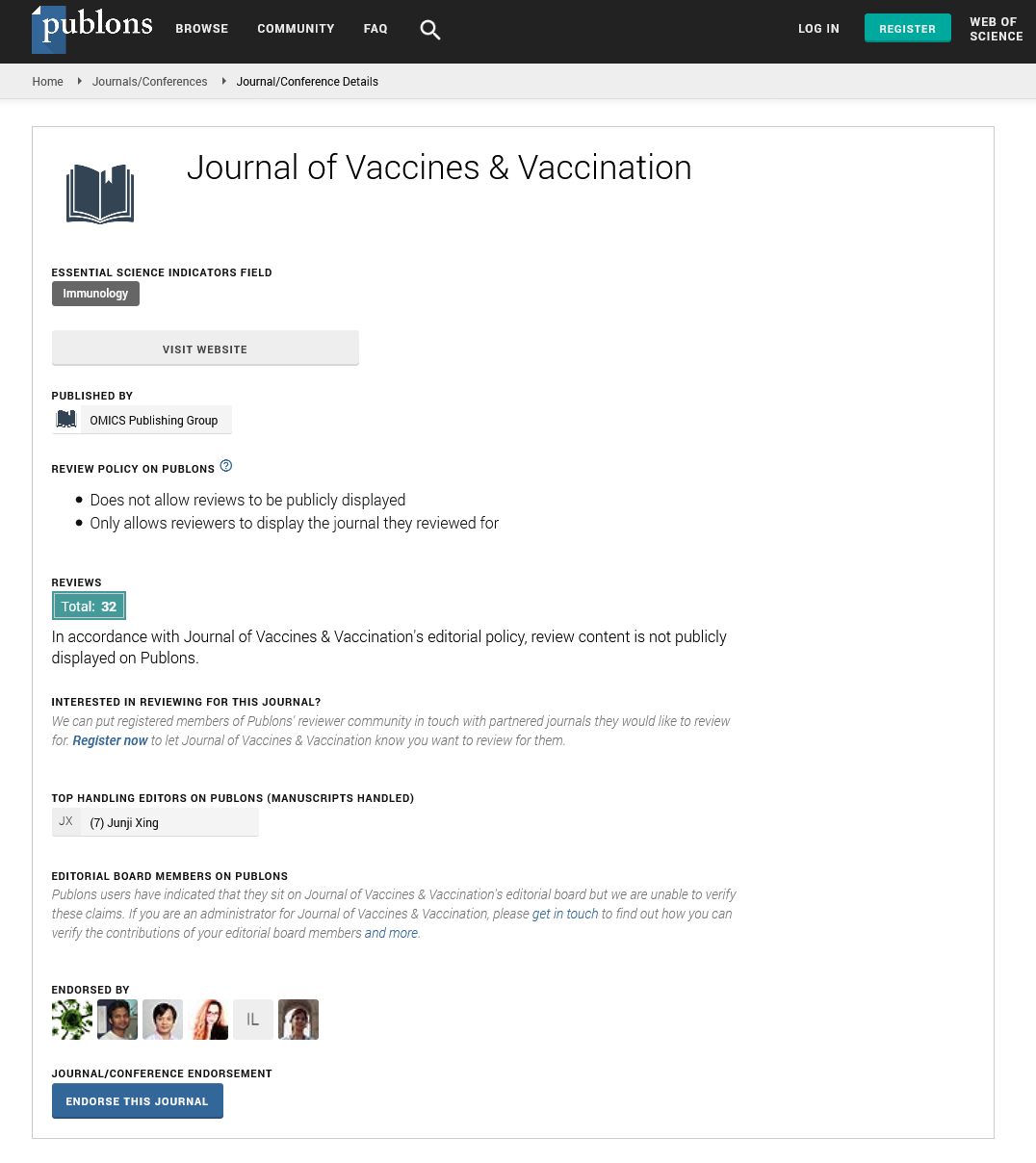Indexed In
- Academic Journals Database
- Open J Gate
- Genamics JournalSeek
- JournalTOCs
- China National Knowledge Infrastructure (CNKI)
- Scimago
- Ulrich's Periodicals Directory
- RefSeek
- Hamdard University
- EBSCO A-Z
- OCLC- WorldCat
- Publons
- MIAR
- University Grants Commission
- Geneva Foundation for Medical Education and Research
- Euro Pub
- Google Scholar
Useful Links
Share This Page
Open Access Journals
- Agri and Aquaculture
- Biochemistry
- Bioinformatics & Systems Biology
- Business & Management
- Chemistry
- Clinical Sciences
- Engineering
- Food & Nutrition
- General Science
- Genetics & Molecular Biology
- Immunology & Microbiology
- Medical Sciences
- Neuroscience & Psychology
- Nursing & Health Care
- Pharmaceutical Sciences
Identification of immunodominant mimotope using phage display peptide library to develop safe and effective vaccine against Bovine viral diarrhea virus
5th International conference on Vaccines, Vaccination and Immunization
August 21-22, 2024 | webinar
Asamenew Tesfaye
Department of Biosystems, Belgium
Scientific Tracks Abstracts: Journal of Vaccines & Vaccination
Abstract:
Bovine viral diarrhea (BVD) is an economically important disease that affects cattle-producing countries worldwide. It is caused by Bovine viral diarrhea virus (BVDV), specifically BVDV 1 and 2 of the genus Pestivirus and family Flaviviridae. The disease manifests as respiratory, gastrointestinal, and reproductive problems, as well as immunosuppression and immunotolerance in affected animals. The prevention and control of the disease rely on a combination of approaches including vaccination, biosecurity, and identification and removal of persistently infected calves. However, currently available commercial vaccines have several disadvantages. These include limited cross-protection, safety concerns, immunosuppression, potential reversion to virulence, induction of neonatal pancytopenia, neutralization by higher titers of maternal antibodies, production costs, and the need for repeated injections in the case of inactivated vaccines. This study aims to identify an antigenic epitope of BVDV to develop a safe and effective vaccine for managing BVD. BVDV mimotopes displayed on M13 phages were isolated by panning a Ph.D.-12 phage library using serum antibodies from BVDV-positive animals. The selected phage peptides were then screened for reactivity with sera from BVDV-infected animals and healthy controls. The phage clones containing the insert library were identified through sequencing. Enzyme-linked immunosorbent Assays (ELISAs) will be subsequently used to assess competitive antibody binding and serological detection. The sequence analysis revealed that the random insert library representing the peptide was missing between the two restriction sites. This suggests that the detected phages were non-specific binders to anti-BVDV IgG. To our knowledge, it will be the first study to use a phage-displayed peptide approach to identify ligands that mimic antigenic determinants of BVDV. Although the random insert library was not found, the results showed the presence of non-specific binders. Therefore, confirmation using ELISA techniques is currently underway. It is a promising approach to develop a BVDV vaccine based on epitopes, which can overcome the limitations of commercially available vaccines.
Biography :
Asamenew Tesfaye is a researcher at the Laboratory of Host-Pathogen Interaction in Livestock, part of the Department of Biosystems at KU Leuven University, Belgium. His work focuses on animal and human health engineering. He is affiliated with the Division of Animal and Human Health Engineering.

